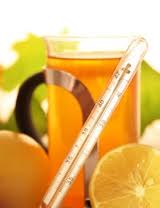The health benefits and nutritional values of the sugarcane juice.
As raw sugar contains no simple sugars, sugarcane juice has a
relatively low glycemic index (the effect a carbohydrate has on blood
glucose levels), which keeps the body's metabolism
healthy and helps maintain a healthy body weight. Roughly one teaspoon
of raw sugar contains only eleven calories. The natural minerals and
vitamins found in sugarcane are exceedingly valuable. Phosphorus,
calcium, iron, magnesium and potassiumNutritional Value of Sugarcane Juice:
The juice extracted from sugarcane not only pacifies the palate, but strengthens the body by providing several nutrients.Following are the values for a glass of juice(approx 150ml)
• Magnesium – 2.5 mg
• Calcium – 32.57 mg
• Calories – 111
• Fats – 0.09 g
• Water – 0.19 g
• Ash – 0.66 g
• Carbohydrates – 27.40 g
• Protein – 0.20 g
Source:Nutritive value of indian foods
http://www.webindia123.com/health/diet/calorie/amount.htm
http://nutrition.indobase.com/articles/sugarcane-juice-nutrition.php
Health Benefits of Sugarcane Juice:
•As this juice does not contain refined sugar,has low glycemic index, people with diabetes can also drink this juice, but under proper guidence.
•This juice prevents tooth decay, thus it is good for teeth.
•Sugarcane juice cures flu, sore throats and cold.
•This assists in keeping clear flow of urine and enables proper functioning of kidneys.
•The liver capacity weakens while suffering from jaundice. Sugarcane juice strengthens liver.
•Sugarcane juice acts like a mild laxative due to high amounts of potassium. Moreover, it aids in good digestion.
•This is alkaline in nature and hence, fights against breast and prostrate cancer.
•This is a refreshing, sweet and a wonderful substitute for an aerated drink. This benefits the body from gaining unnecessary calories.
•High amounts of carbohydrates aids in refreshing and energizing the body immediately. Glucose furnished to body through the juice is stored in muscles and is burnt for providing instant energy to body.
Go ahead cool yourself with this natural cooler....














































